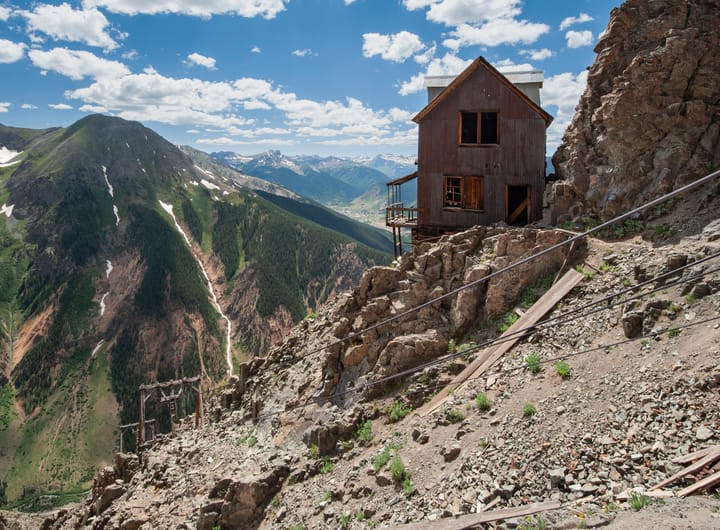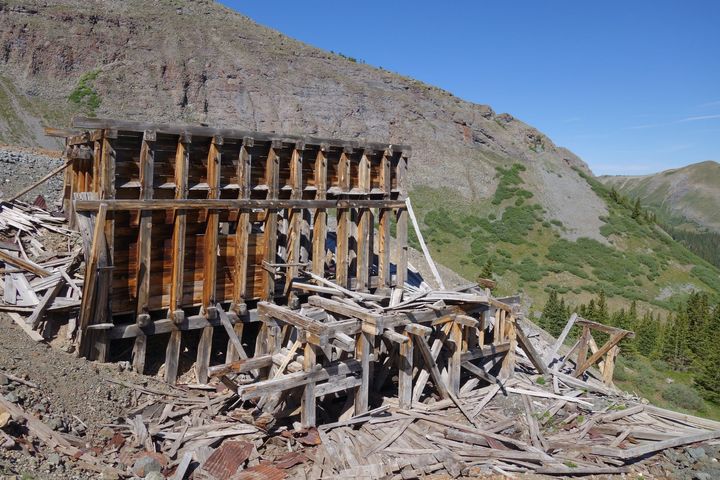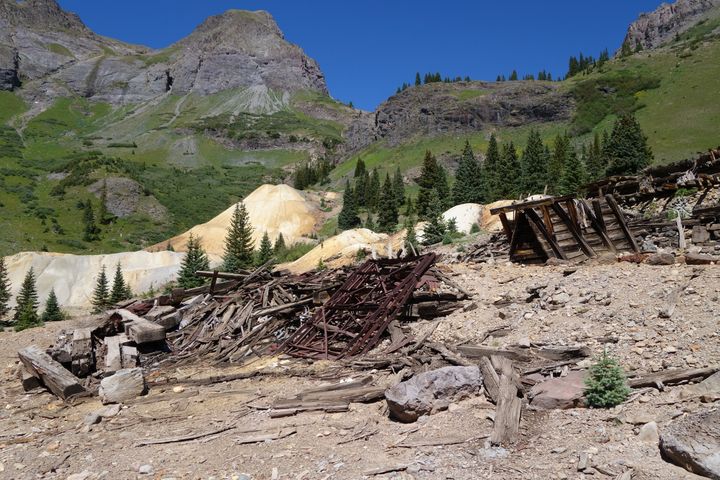This was a really fun place to visit for me and one I’ve been trying to get to for some time. Weather makes it hard to get to most of the year, and you have to climb up to the mining camp at 12,200 ft elevation.
Read next

Old Hundred Boarding House
Observant travelers heading east out of Silverton on the Alpine Loop might spot a large wooden building high on the west slope of Galena Mountain, as they approach the old mill site of Howardsville. It is an astonishing sight— the structure appears to impossibly cling to a sheer and inaccessible

Mayflower Mine (Telluride)
The Mayflower Mine was an unsuccessful gold producer high above Telluride. Not much is published on its history, but the site has some interesting remnants. The operation started around 1890, and was largely abandoned by 1920. Something to note about this mine is that the original claim was actually called

Barstow Mine (Red Mountain)
The Barstow Mine in southwest Colorado was an early polymetallic producer above the townsite of Guston.
